An Integrated Rural Development Mode Based on a Tourism-Oriented Approach: Exploring the Beautiful Village Project in China
Abstract
:1. Introduction
2. Research Methodology
3. Fifty Most Beautiful Villages in China
3.1. Spatial Distribution Verified by the Ministry of Agriculture
3.2. Analysis of Spatial Distribution Characteristics
3.2.1. Spatial Distribution Characteristics
3.2.2. Rural Industrial Spatial Distribution
3.3. Integrated Rural Tourism-Oriented Development Mode
4. Integrated Rural Tourism-Oriented Development Mode: Case Study in Qianganshu Village
4.1. Remote Sensing Images of Qinggangshu Village
4.2. Field Work in Qinggangshu Village
4.3. Findings
4.3.1. Dilemmas of the Traditional Rural Development Pattern of Qinggangshu Village
4.3.2. AMD Model Based on the Integrated Development Mode of “Production, Village and Landscape”
- Village planning to construct livable environment.
- 2.
- Tourism development to create vitality for villages
- 3.
- Landscape construction to make the village more beautiful
5. Discussion
6. Conclusions
Author Contributions
Funding
Conflicts of Interest
References
- Yang, R.; Liu, Y.; Long, H.; Zhang, Y. Research progress and prospect of rural transformation and reconstruction in China: Paradigms and main content. Prog. Geogr. 2015, 34, 1019–1030. [Google Scholar]
- Ploeg, J.D.V.D.; Renting, H.; Brunori, G.; Knickel, K.; Mannion, J.; Marsden, T.; Roest, K.D.; Sevilla-Guzmán, E.; Ventura, F. Rural development: From practices and policies towards theory. Sociol. Rural. 2010, 40, 391–408. [Google Scholar] [CrossRef]
- Marsden, T.; Banks, J.; Renting, H.; Van Der Ploeg, J.D. The road towards sustainable rural development: Issues of theory, policy and research practice. J. Environ. Policy Plan. 2010, 3, 75–83. [Google Scholar] [CrossRef]
- Torre, A.; Wallet, F. Conclusion. Rural Development in the 21st Century; Springer International Publishing: Berlin/Heidelberg, Germany, 2016. [Google Scholar]
- Arabatzis, G.; Aggelopoulos, S.; Tsiantikoudis, S. Rural development and leader+in Greece: Evaluation of local action groups. J. Food Agric. Environ. 2010, 8, 42–55. [Google Scholar]
- Markey, S.; Halseth, G.; Manson, D. Challenging the inevitability of rural decline: Advancing the policy of place in northern British Columbia. J. Rural Stud. 2008, 24, 409–421. [Google Scholar] [CrossRef]
- Curry, N. Sustainable rural development in England: Policy problems and equity consequences. Local Economy 2012, 27, 95–102. [Google Scholar] [CrossRef] [Green Version]
- Owen, D.; Hogarth, T.; Green, A.E. Skills, transport and economic development: Evidence from a rural area in england. J. Transp. Geogr. 2012, 21, 80–92. [Google Scholar] [CrossRef]
- Woods, M.; Woods, M. Rural geography: Processes, responses and experiences in rural restructuring. Rural Geogr. Process. Responses Exp. Rural Restruct. 2005, 7, 494–496. [Google Scholar]
- Woods, M. Contesting Rurality: Politics in the British Countryside; Routledge: London, UK, 2017. [Google Scholar]
- Rullière, G.; Tracy, M. Agriculture in western Europe, crisis and adaptation since 1880. Econ. Hist. Rev. 1964, 18, 78–82. [Google Scholar] [CrossRef]
- Gray, J. The common agricultural policy and the re-invention of the rural in the European community. Sociol. Rural. 2000, 40, 30–52. [Google Scholar] [CrossRef]
- Childs, G.; Minay, C. The Northern Pennines Rural Development Board: A Rural Development Agency in Theory and Practice; Oxford Polytechnic, Department of Town Planning: Oxford, UK, 1977. [Google Scholar]
- Ohara, K.; Soda, O. The development of agriculture and agricultural policy and the change of views on farming and rural society after world war II [in Japan]. Bull. Fac. Bioresour. 1994, 12, 167–181. [Google Scholar]
- Ranson, B. Rural education and economic development in China, Mexico, Japan, and the united states. Comp. Educ. Rev. 1988, 32, 213–225. [Google Scholar] [CrossRef]
- Knight, J. Rural revitalization in japan: Spirit of the village and taste of the country. Asian Surv. 1994, 34, 634–646. [Google Scholar] [CrossRef]
- Mcmorran, C. Anthony rausch, cultural commodities in Japanese rural revitalization: Tsugaru nuri lacquerware and tsugaru shamisen. Brill, 2010, 200pp. Asian J. Soc. Sci. 2011, 39, 553–555. [Google Scholar] [CrossRef]
- Wahlin, W.; Natsuda, K. One village one product: Japan’s rural entrepreneurial scheme goes abroad. Japan Inc. 2008, 75, 60. [Google Scholar]
- Shakya, G. Understanding one Village one Product in Japan, Thailand and Nepal; Agro Enterprise Centre/Japan International Cooperation Agency (JICA), Nepal office: Kathmandu, Nepal, 2011. [Google Scholar]
- Thu, N.T.A. One village one product (ovop) in Japan to one tambon one product (otop) in Thailand: Lessons for grass root development in developing countries. J. Soc. Dev. Sci. 2013, 4, 529. [Google Scholar]
- Pinkston, D.A. The evolution of south Korea’s rural institutions: The political economy of export promotion and market protection. J. East Asian Stud. 2007, 7, 61–92. [Google Scholar] [CrossRef]
- Shi, L. A search for “alternative” developmental paradigm: New village movement in South Korea and rural\construction in China. Sociol. Res. 2004, 4, 39–49. [Google Scholar]
- Williams, W.M. Changing functions of the community. Sociol. Rural. 2008, 4, 299–314. [Google Scholar] [CrossRef]
- Zou, L.X. Research on rural revitalization strategy in China. Sci. Decis. Mak. 2017, 12, 19–34. [Google Scholar]
- Liu, Y.; Li, Y. Revitalize the world’s countryside. Nature 2017, 548, 275–277. [Google Scholar] [CrossRef] [PubMed]
- Zhu, Q. Obstacles to the rural rejuvenation and solutions. Frontiers 2018, 3, 19–25. [Google Scholar]
- He, Y.; Sun, P.; Chai, Z. Village planning methods based on the holistic concept of landscape. City Plan. Rev. 2012, 36, 58–62. [Google Scholar]
- Pan, L.; Shan, T.; Tang, Z. Urban layout research base the integration theory of production, life and ecology: Wenzhou example. Planners 2014, 3, 265–270. [Google Scholar]
- Zheng, X.Q.; Chen, M. Theoretical framework and model design for beautiful countryside construction in china. J. Agric. Resour. Environ. 2015, 32, 106–115. [Google Scholar]
- Cheng, Y. Research on the consumption space production of community-type scenic areas based on the observation of Hong village in Anhui province. In Proceedings of the International Conference on Judicial, Administrative and Humanitarian Problems of State Structures and Economic Subjects, Moscow, Russia, 21–23 September 2017. [Google Scholar]
- Kloog, I.; Haim, A.; Portnov, B.A. Using kernel density function as an urban analysis tool: Investigating the association between nightlight exposure and the incidence of breast cancer in Haifa, Israel. Comput. Environ. Urban Syst. 2009, 33, 55–63. [Google Scholar] [CrossRef]
- Zuo, Z.; Liu, Y.; Chen, B.; Chen, K. Using Gis and Kde Analysis Spatial Distribution on Public Housing Households: A Case Study; IEEE: Piscataway, NJ, USA, 2013. [Google Scholar]
- Cui, Y.; Cheng, D.; Choi, C.E.; Jin, W.; Lei, Y.; Kargel, J.S. The cost of rapid and haphazard urbanization: Lessons learned from the freetown landslide disaster. Landslides 2019, 16, 1–10. [Google Scholar] [CrossRef]
- Cheng, D.; Cui, Y.; Su, F.; Jia, Y.; Choi, C.E. The characteristics of the Mocoa compound disaster event, Colombia. Landslides 2018, 15, 1223–1232. [Google Scholar] [CrossRef] [Green Version]
- Gao, C.; Cheng, L.; Cheng, D. Research on rural integration development mofe base on integration of production, village and scenery: Take an example from daigou’ s integrated practice. Issues Agric. Econ. 2019, 5, 90–97. [Google Scholar]
- Xie, B.; Xiang, Y. Construction and application of evaluation index system for beautiful China. Econ. Geogr. 2017, 37, 15–20. [Google Scholar]
- Liu, Y. Research on the urban-rural integration and rural revitalization in the new era in China. Acta Geographica Sin. 2018, 73, 637–650. [Google Scholar]
- Kong, J.; Fu, M. Research on characteristics of spatial form of the natural resources type tourism villages—Based on China’s top ten most beautiful villages. Archit. Cult. 2015, 12, 155–156. [Google Scholar]
- Ministry of Agriculture and Rural Affairs of the People’s Republic of China. Most Beautiful Villages in China. Available online: http://www.moa.gov.cn/ (accessed on 13 June 2019).
- Strategy, D.F. Do People with Tibetan Plots Know All These Places? Available online: http://www.sohu.com/a/167842125_628049 (accessed on 13 June 2019).
- Roadside, A.T. Finding Nahui Village, Guizhou Province, the Beautiful Village in China. Available online: http://k.sina.com.cn/article_6440809460_17fe6f3f40010043hv.html?from=travel (accessed on 13 June 2019).
- Eraqi, M.I. Rural tourism quality: Fayoum as a rural tourist destination in Egypt. Int. J. Tour. Anthropol. 2010, 1, 70–86. [Google Scholar] [CrossRef]
- Wang, S.W.; Wang, J.L.; Wang, H. Influence of foreign garbage to ecological environment in China and analysis on the risk management and control of customs. China Popul. Resour. Environ. 2016, 26, 22–31. [Google Scholar]
- Wang, C.; Yang, Y.; Zhang, Y. Economic development, rural livelihoods, and ecological restoration: Evidence from China. Ambio 2011, 40, 78–87. [Google Scholar] [CrossRef] [PubMed]
- Xing, X.F. Measurement and analysis of the relationship between economic development and environmental protection of Shandong province. China Popul. Resour. Environ. 2006, 16, 58–61. [Google Scholar]
- Jiang, J.B.; Wu, X.X.; Lu, Y. Towards a better understanding of the relationships between tourism involvement and place attachment: Evidence from rural tourism destinations in China. Int. J. Tour. Anthropol. 2014, 3, 245–260. [Google Scholar] [CrossRef]
- Vajirakachorn, T.; Nepal, S.K.; Su, M.M. Local perspectives of community-based tourism: Case study from Thailand’s Amphawa floating market. Int. J. Tour. Anthropol. 2014, 3, 342–356. [Google Scholar] [CrossRef]
- Wang, Y.; Liu, J.; Xue, H.; Tan, Z. Rural plan implementation based on land property right innovation: A case study on Qinggangshu village in Chengdu. Dev. Small Cities Towns 2018, 27, 34–41. [Google Scholar]
- Hu, S.; Liu, Y.; Xu, K. Hollow villages and rural restructuring in major rural regions of China: A case study of Yucheng city, Shandong province. Chin. Geogr. Sci. 2011, 21, 354–363. [Google Scholar]
- Hu, B.; Chen, C. New urbanisation under globalisation and the social implications in China. Asia Pac. Policy Stud. 2015, 2, 34–43. [Google Scholar] [CrossRef]
- Wang, Y.; Xin, L.; Zhang, H.; Li, Y. An estimation of the extent of rent-free farmland transfer and its driving forces in rural China: A multilevel logit model analysis. Sustainability 2019, 11, 3161. [Google Scholar] [CrossRef]
- Chen, A. The politics of the shareholding collective economy in China’s rural villages. J. Peasant Stud. 2016, 43, 828–849. [Google Scholar] [CrossRef]
- Li, X.; Liu, Y.; Chen, Y.; Li, P.; Yu, Z. Village regrouping in the eastern plains of China: A perspective on home-field distance. Sustainability 2019, 11, 1630. [Google Scholar] [CrossRef]
- Yunzhang, L.; Xukun, L.; Yi, C. Comparative study of the street space of the western of Sichuan and Huizhou folk houses. Huazhong Archit. 2015, 6, 176–180. [Google Scholar]
- Bagur-Femenías, L.; Perramon, J.; Oliveras-Villanueva, M. Effects of service quality policies in the tourism sector performance: An empirical analysis of Spanish hotels and restaurants. Sustainability 2019, 11, 872. [Google Scholar] [CrossRef]
- Fotiadis, A.; Nuryyev, G.; Achyldurdyyeva, J.; Spyridou, A. The impact of EU sponsorship, size, and geographic characteristics on rural tourism development. Sustainability 2019, 11, 2375. [Google Scholar] [CrossRef]
- Zhang, T.; Chen, J.; Hu, B. Authenticity, quality, and loyalty: Local food and sustainable tourism experience. Sustainability 2019, 11, 3437. [Google Scholar] [CrossRef]
- Yang, X.J. China’s rapid urbanization. Science 2013, 342, 310. [Google Scholar] [CrossRef]
- Poel, E.V.; O’Donnell, O.; Doorslaer, E.V. Is there a health penalty of China’s rapid urbanization? Health Econ. 2012, 21, 367–385. [Google Scholar] [CrossRef]
- Ellen, V.D.P.; O’Donnell, O.; Van Doorslaer, E. The health penalty of China’s rapid urbanization. Soc. Sci. Electron. Publ. 2009, 3, 9–16. [Google Scholar]
- Yu, A.T.W.; Wu, Y.; Zheng, B.; Zhang, X.; Shen, L. Identifying risk factors of urban-rural conflict in urbanization: A case of China. Habitat Int. 2014, 44, 177–185. [Google Scholar] [CrossRef]
- Blancas, F.J.; Lozano-Oyola, M.; González, M.; Guerrero, F.M.; Caballero, R. How to use sustainability indicators for tourism planning: The case of rural tourism in Andalusia (Spain). Sci. Total Environ. 2011, 412, 28–45. [Google Scholar] [CrossRef] [PubMed]
- Liu, Y.S.; Yang, Z. Challenges and countermeasures for beautiful countryside construction in China. J. Agric. Resour. Environ. 2015, 32, 97–105. [Google Scholar]
- Chi, Z.X.; Huang, M.; Zhao, H.T. Theoretical foundation and advantageous conditions for constructing beautiful countryside in China: A case study of Jiangxi province. J. Agro For. Econ. Manag. 2015, 14, 84–90. [Google Scholar]
- Zhou, Z.Z. Landscape changes in a rural area in China. Landsc. Urban Plan. 2000, 47, 33–38. [Google Scholar]
- Benjamin, D.; Brandt, L.; Fan, J.Z. Ceaseless Toil? Health and Labor Supply of the Elderly in Rural China; Working Paper No. 579; William Davidson Institute: Ann Arbor, MI, USA, 2003. [Google Scholar] [CrossRef]
- Li, Y.; Westlund, H.; Zheng, X.; Liu, Y. Bottom-up initiatives and revival in the face of rural decline: Case studies from China and Sweden. J. Rural Stud. 2016, 47, 506–513. [Google Scholar] [CrossRef]
- Maria, G. Home away from home: Landscape as a mediator between place and belonging in the peripheral areas of the Marche region in Italy. Int. J. Tour. Anthropol. 2018, 6, 340–356. [Google Scholar]
- Nikolaos, B. Rural tourism and residents’ well-being in Cyprus: Towards a conceptualised framework of the appreciation of rural tourism for islands’ sustainable development and competitiveness. Int. J. Tour. Anthropol. 2019, 7, 60–68. [Google Scholar]
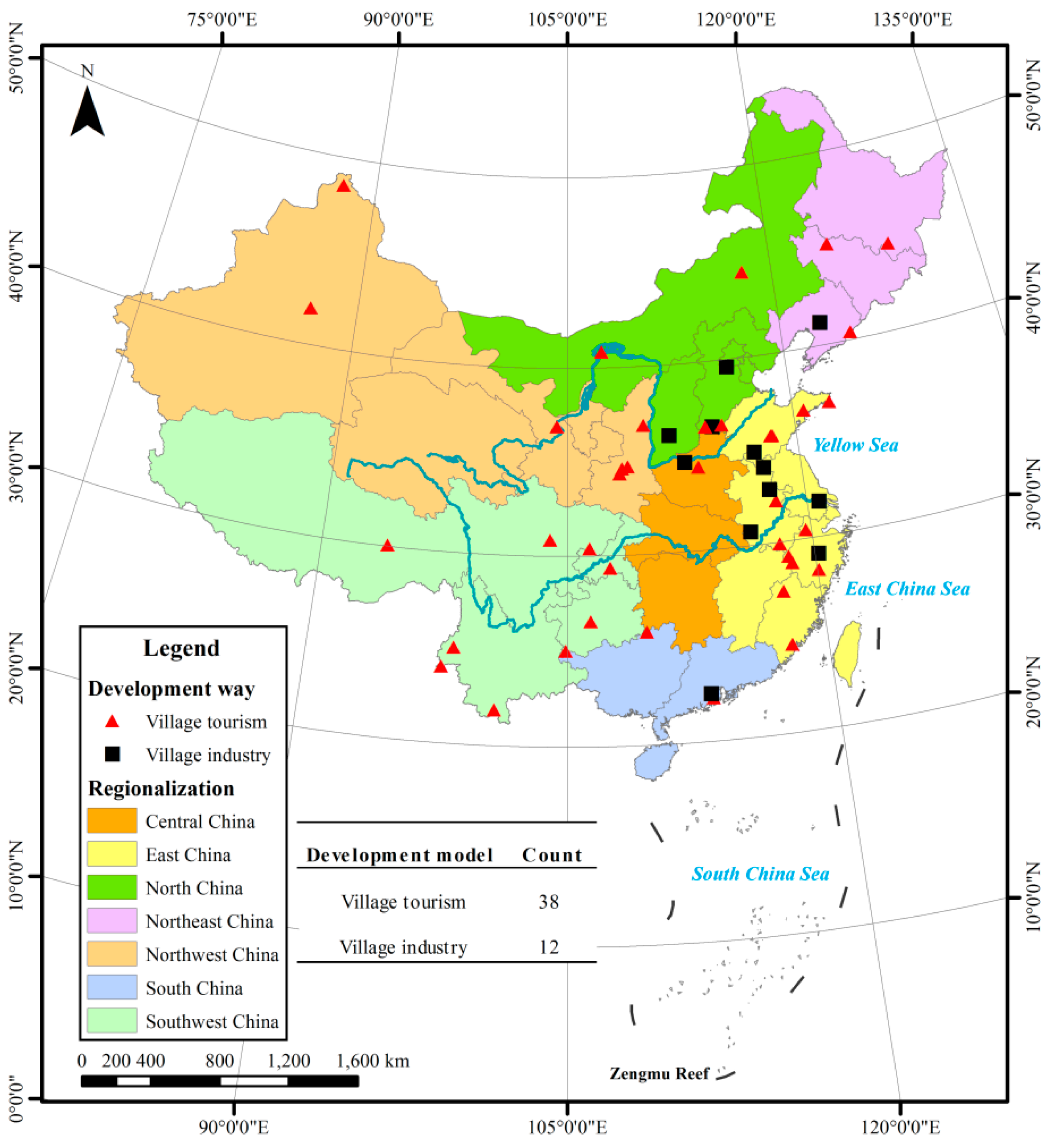
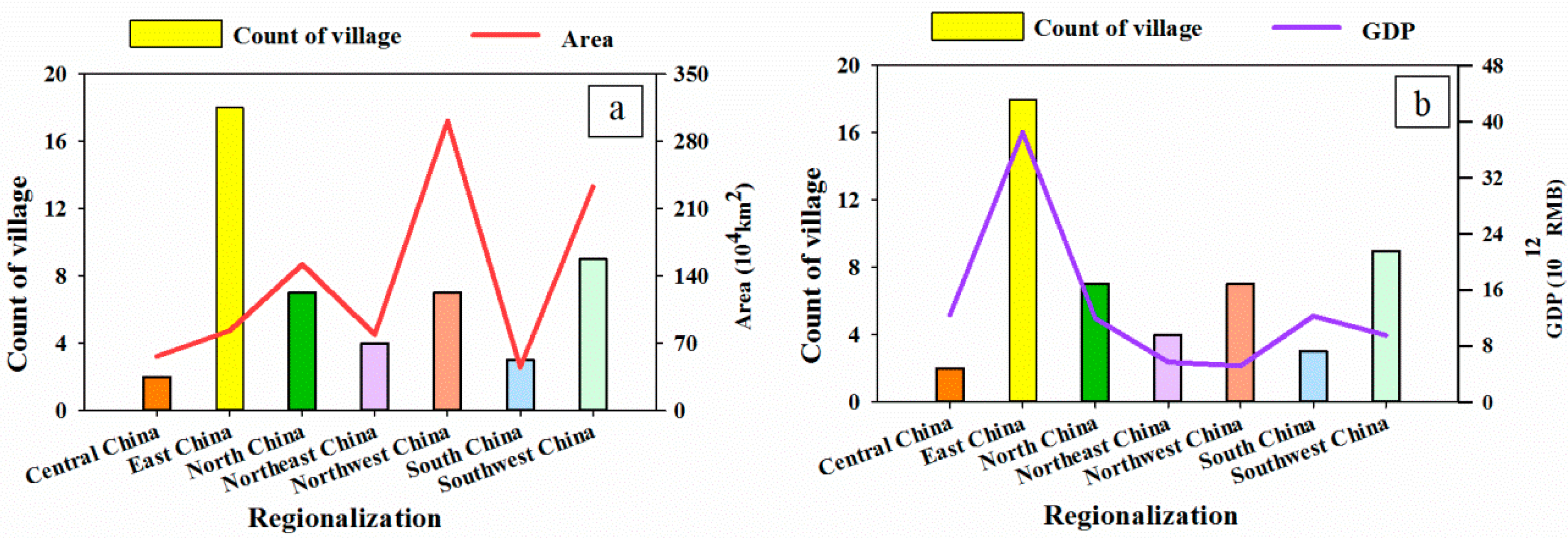




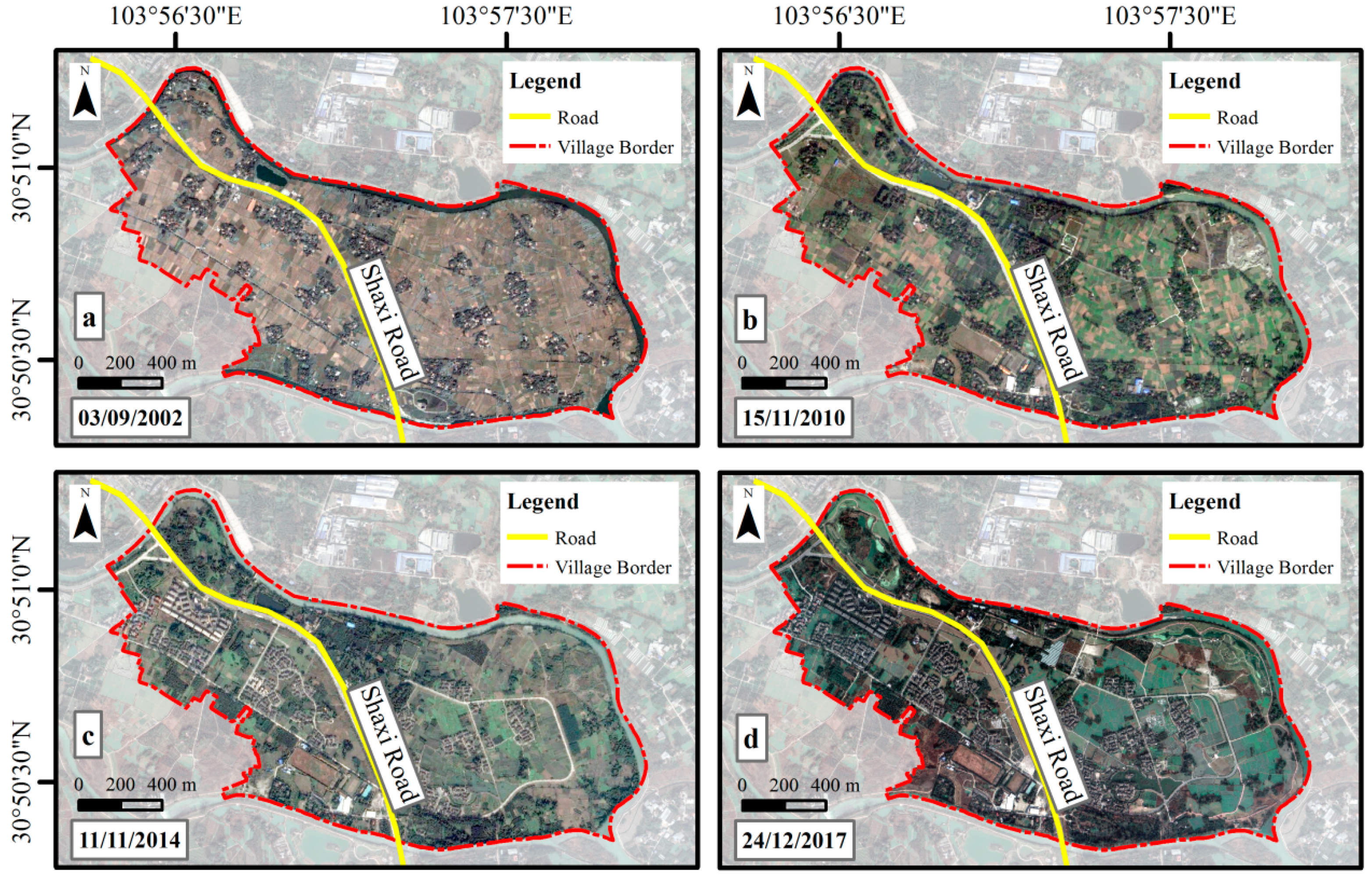

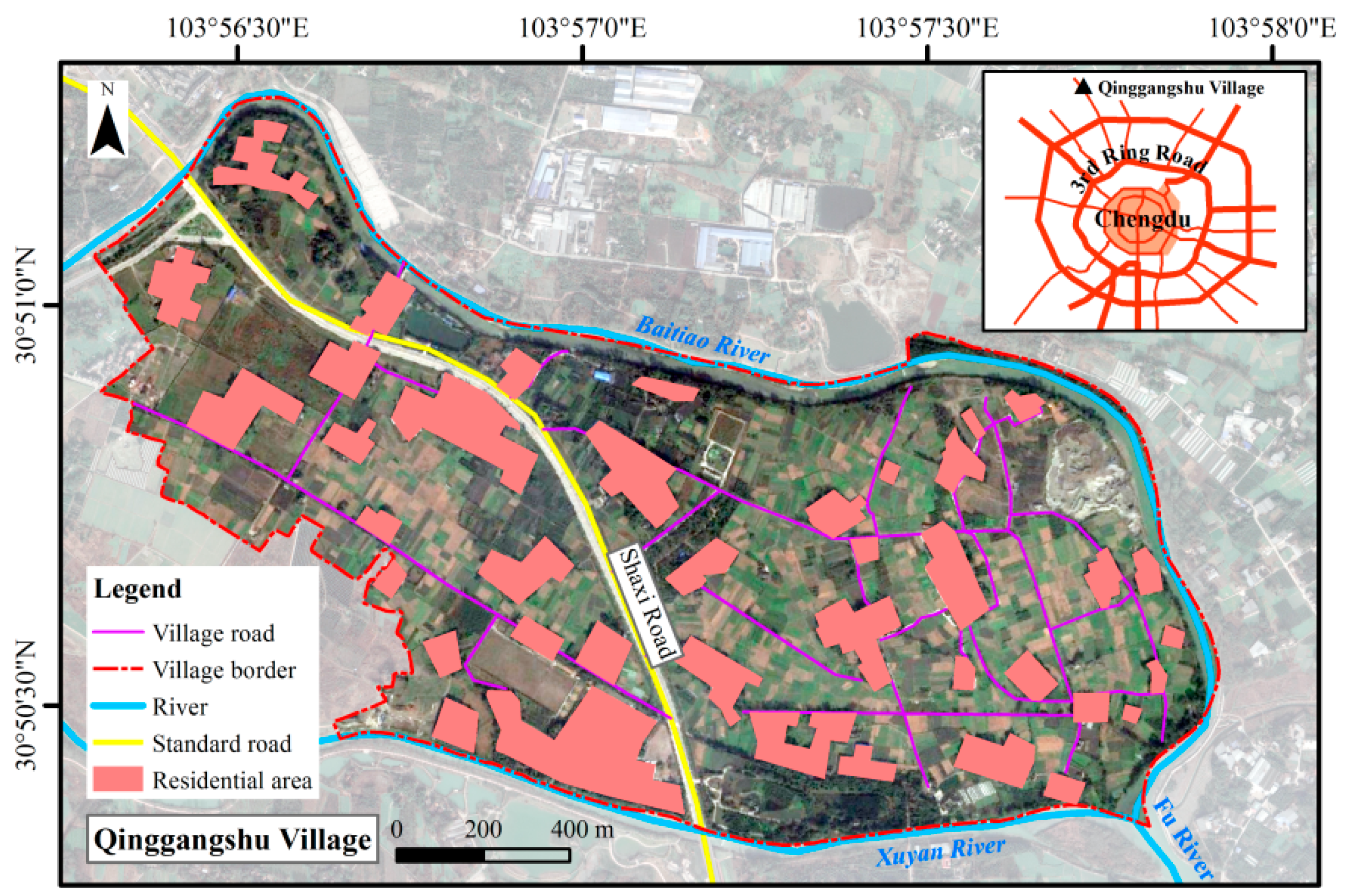
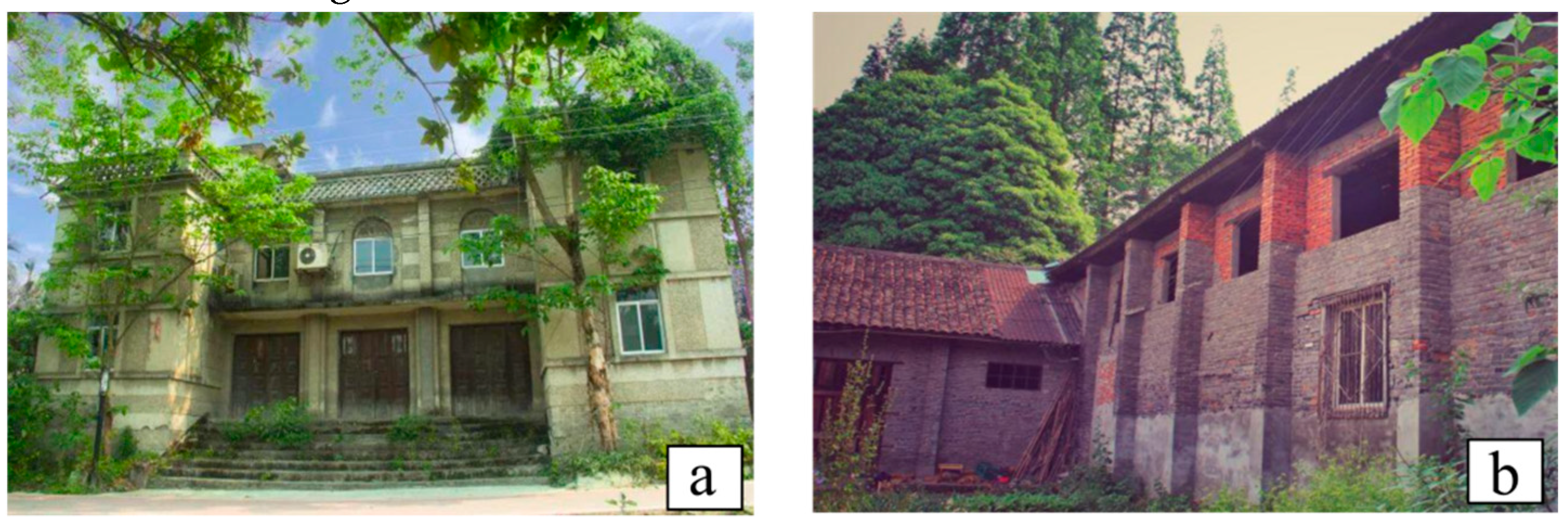
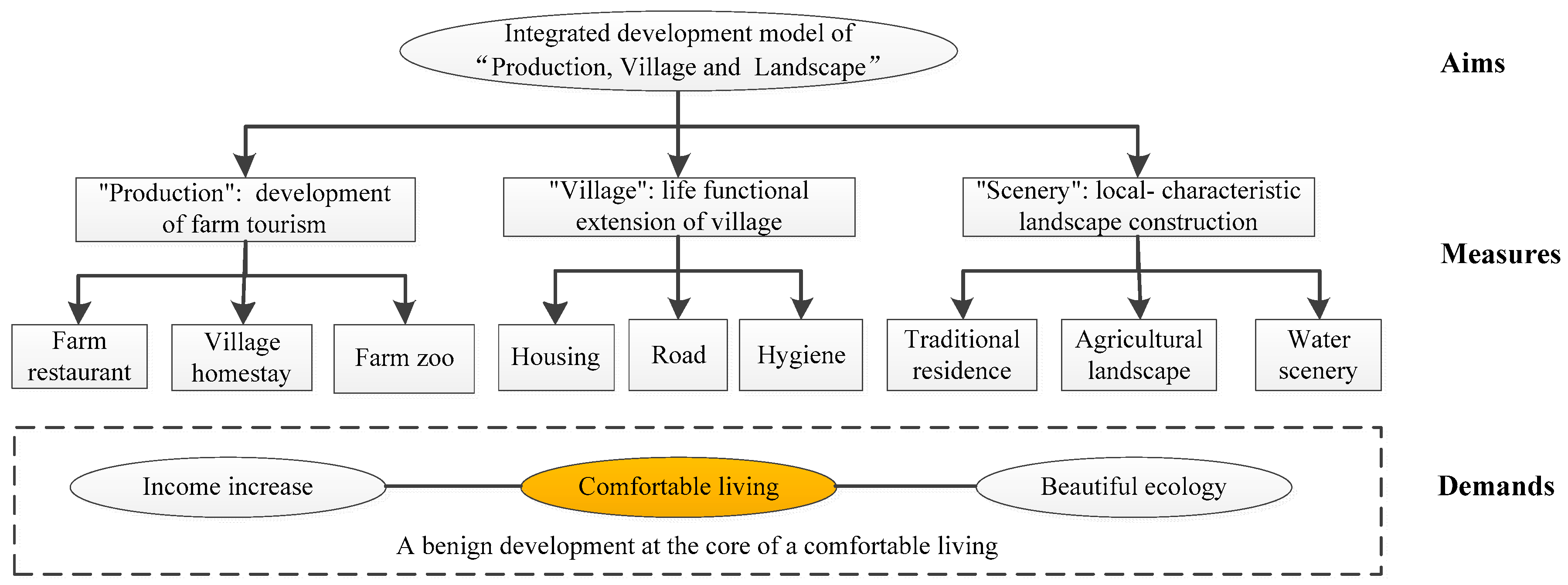
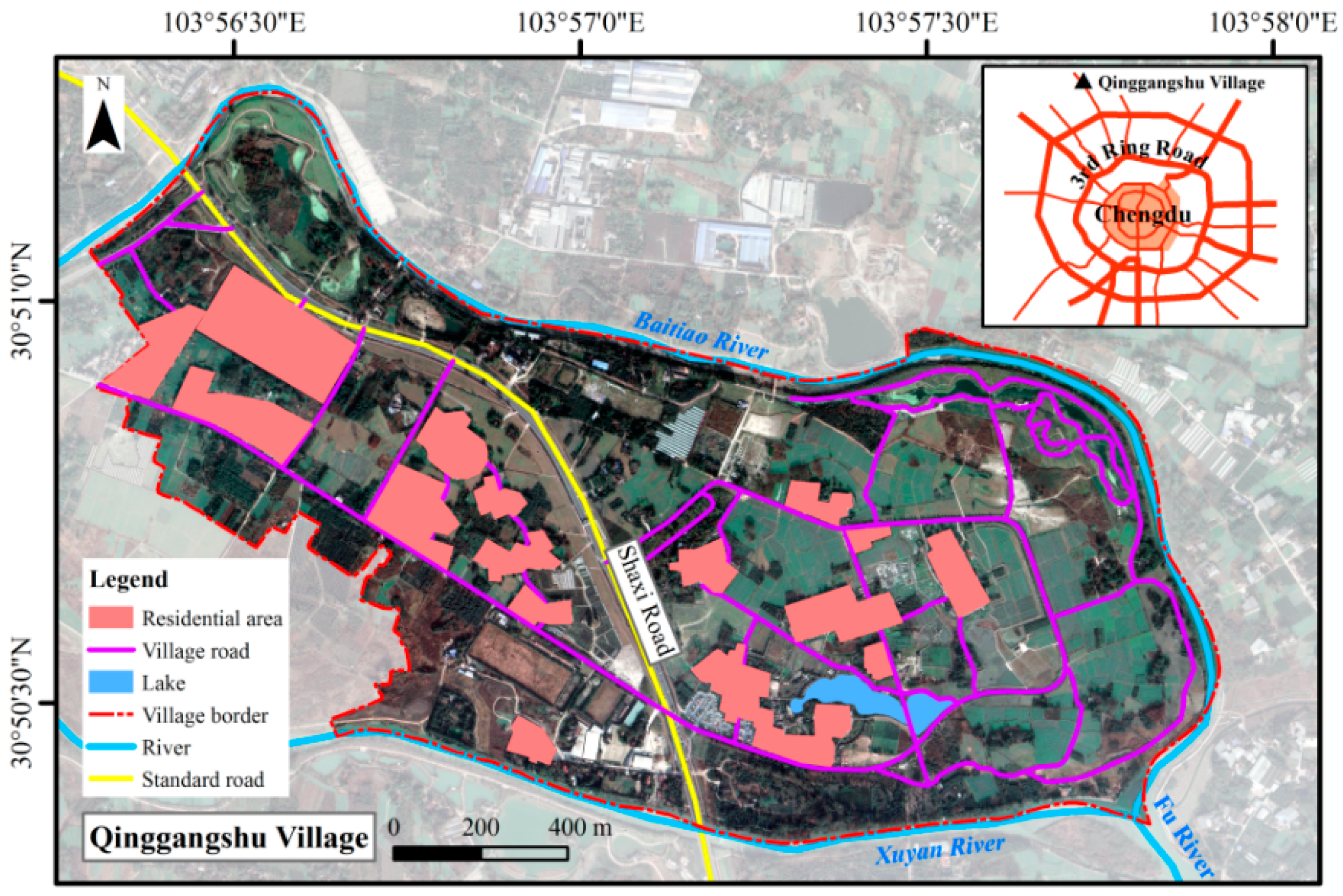

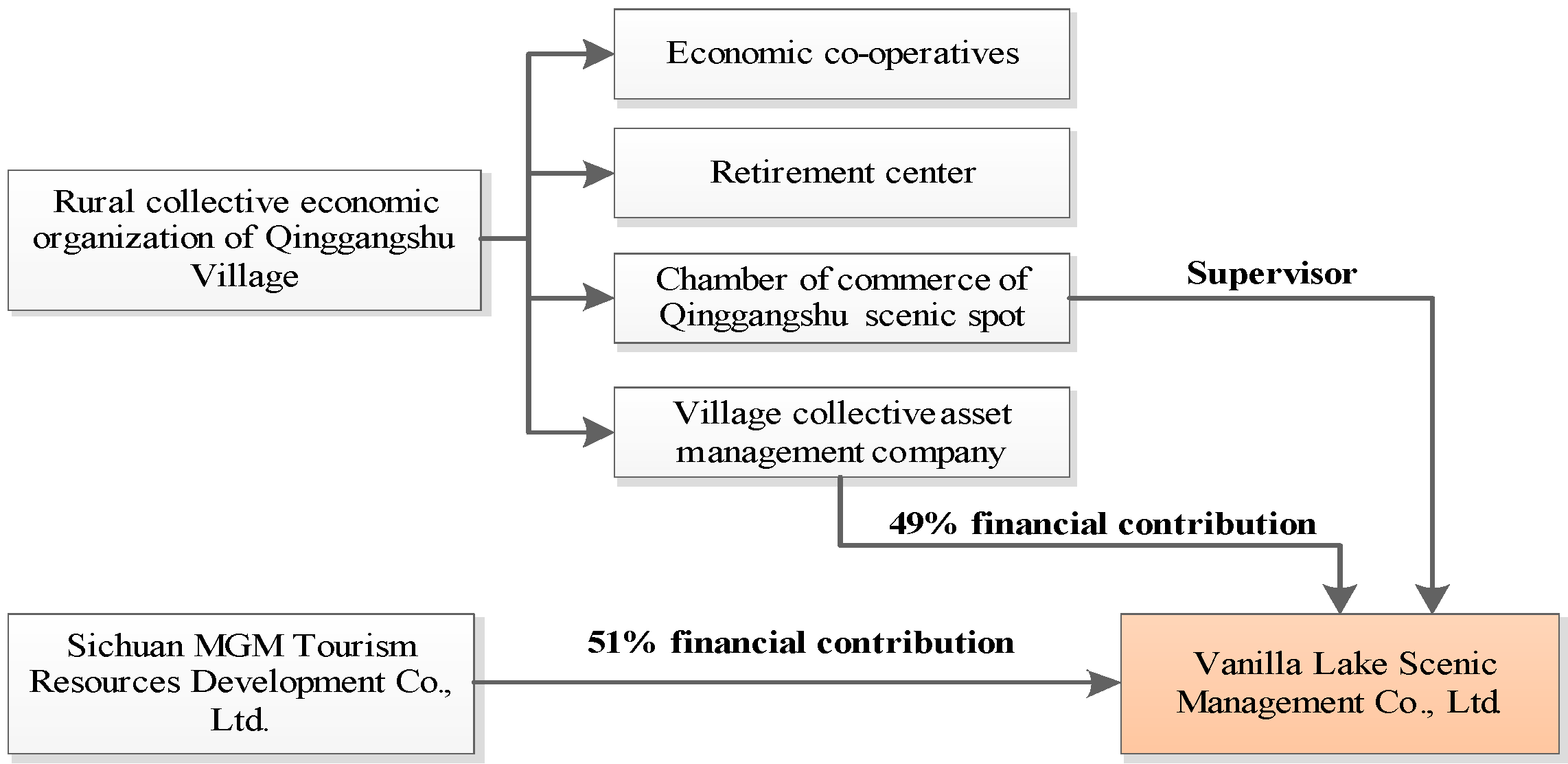


© 2019 by the authors. Licensee MDPI, Basel, Switzerland. This article is an open access article distributed under the terms and conditions of the Creative Commons Attribution (CC BY) license (http://creativecommons.org/licenses/by/4.0/).
Share and Cite
Gao, C.; Cheng, L.; Iqbal, J.; Cheng, D. An Integrated Rural Development Mode Based on a Tourism-Oriented Approach: Exploring the Beautiful Village Project in China. Sustainability 2019, 11, 3890. https://doi.org/10.3390/su11143890
Gao C, Cheng L, Iqbal J, Cheng D. An Integrated Rural Development Mode Based on a Tourism-Oriented Approach: Exploring the Beautiful Village Project in China. Sustainability. 2019; 11(14):3890. https://doi.org/10.3390/su11143890
Chicago/Turabian StyleGao, Chunliu, Li Cheng, Javed Iqbal, and Deqiang Cheng. 2019. "An Integrated Rural Development Mode Based on a Tourism-Oriented Approach: Exploring the Beautiful Village Project in China" Sustainability 11, no. 14: 3890. https://doi.org/10.3390/su11143890
APA StyleGao, C., Cheng, L., Iqbal, J., & Cheng, D. (2019). An Integrated Rural Development Mode Based on a Tourism-Oriented Approach: Exploring the Beautiful Village Project in China. Sustainability, 11(14), 3890. https://doi.org/10.3390/su11143890





